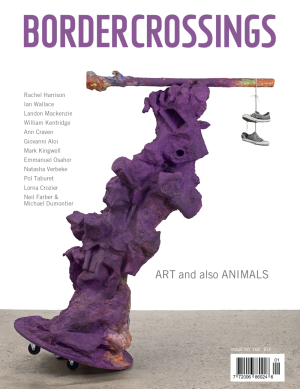The Last Best West by Jean Bruce
Losing Another Eden
The Last Best West is a pictorial volume recording the story of pioneer immigration with 190 photos and a text taken from letters, documents, brochures and books written during pregnant decade before the first world war.
Jean Bruce took the name of her book from the title of one of the Interior Department brochures of the early 1900s which sold and oversold the benefits of immigration to the prairies. It told prospective settlers of the “invigorating” climate, with its “aseptic” air, and with soil which does not breed “the miasma of malaria.” As if that wasn’t enough it claimed that “Sufferers from consumption, asthma … rheumatism, ague and many other diseases are always greatly benefitted and frequently cured by a residence here” … Ha’.
And that optimistic assertion was exceeded by the Saskatoon Board of Trade in 1908, when it urged newcomers to “Grasp this sterling truth … — NO MAN DESERVING OF SUCCESS HAS EVER YET FAILED IN WESTERN CANADA.” What’s more, in the Saskatoon district “the crop never fails.”
Whoever wrote those lines was probably unable to get his tongue out of his cheek forever after.
These are just a few gems from Jean Bruce’s text which begins with the advertising campaign inspired by Laurier’s Minister of the Interior, Sir Clifford Sifton, who said: “Immigration has to be carried on in the same manner as the sale of any commodity.”
The author moves on to the problems encountered by the immigrants, tapping a variety of sources including the settlers themselves of all origins.
Through the combination of photos and colorful word pictures we meet the English, the Danish, the Ukrainians, the Mennonites, the Germans, the Doukhobors and many others including some Black Americans, who also pioneered the Canadian west.
For those from the old country troubles began en route and, in addition to the all-too-frequent bad shipping, one Ukrainian immigrant wrote in the 1890s:
“It is only two weeks since I tested Ruthenian Borsch, Cabbage and cornmeal for the last time, yet I am already afraid of starving to death on the fancy English food.” This unknown ingrate thought the English food might be fit for “dogs alone” and urged those coming later to bring not only rye bread, sausage and sheep cheese, but — unkindest cut of all — “some good coffee or tea.”
We learn of racial and labor problems and of the patronizing attitude taken to the men in sheepskin coats even by enlightened people like James Woodsworth. He was concerned about assimilating East Europeans, and the Orientals he wrote “cannot be assimilated.”
Bruce also tells us of Sifton ‘s opposition to Orientals because “Asians did not make good farmers. Neither, he thought did Italians, Blacks or Jews.”
Jean Bruce sets out the immigration and settlement situation of that period well enough in her introduction and for most groups she follows through in a manner that indicates at least some of the problems they experienced. The Jews however are limited to two photographs, one of a Jewish-owned store on Selkirk Avenue, prosperous for the time, the other a settler’s house at Bender Hamlet. The latter must have been the nicest looking house in that Manitoba settlement in the stony Interlake District. Elsewhere it has been called the settlement that failed.
Even more important, she fails to consider the restrictions that set the stage for closing the immigration doors even before they were shut by world war one. The book fizzles out with a pollyanish statement from Clifford Sifton.
Abraham Arnold is an historian and free-lance writer. He is a frequent reviewer for the CBC and recently published, in conjunction with William Kureluk, Jewish Life in Canada.

